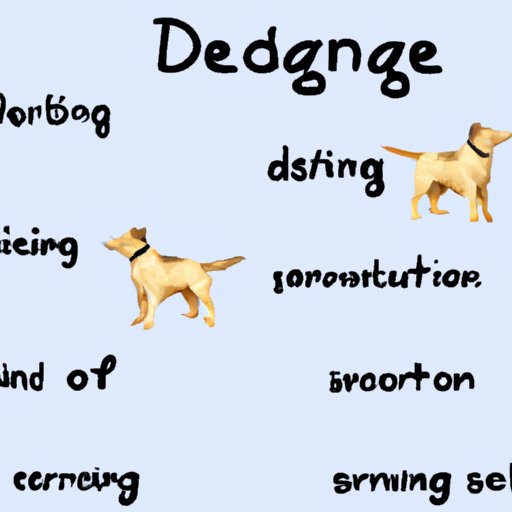Introduction
When you’re trying to accurately describe a dog in writing, it can be difficult to capture its unique personality and physical features. This article will provide an overview of how to do this, so that readers can get a clear picture of the dog and understand its character. It is important to be able to accurately describe a dog in writing because it allows readers to connect with the dog and form an emotional bond with it.

Describing the Physical Characteristics of the Dog
The first step in describing a dog in writing is to focus on its physical characteristics. You should include details about its size, fur color, and body shape. For example, you could say “She was a medium-sized dog with a sleek black coat and a muscular build.” This gives readers a good idea of what the dog looks like without having to see it in person.
Describing the Dog’s Personality Traits
In addition to the physical characteristics, you should also include details about the dog’s personality traits. These can include its energy level, loyalty, and affection. For example, you might say “He had boundless energy and was always eager to please his owners. He was fiercely loyal and showed endless affection for everyone he met.” This helps readers gain a better understanding of the dog’s character and why it is so special.
Using Sensory Language to Create a Vivid Picture
When describing a dog in writing, it is important to use sensory language to create a vivid picture for readers. This includes details about the sound of its bark, the feel of its fur, and any other details that help bring the dog to life. For example, you could say “His bark was deep and rumbly, and his fur was soft and silky.” This type of language helps readers imagine what it would be like to interact with the dog.
Describing How the Dog Interacts with Its Environment
Another important aspect of describing a dog in writing is to include details about how it interacts with its environment. This could include playing with toys, going for walks, or anything else that helps illustrate the dog’s personality. For example, you might say “She loved chasing after balls and taking long walks in the park.” This helps readers gain a better understanding of the dog and its habits.

Creating an Anecdote about the Dog
A great way to add depth to your description of the dog is to include anecdotes about funny stories or memories that highlight the dog’s unique character. This could be anything from the time it chased a squirrel up a tree to the time it snuck into the neighbor’s yard to steal their food. These types of stories will help readers connect with the dog and make them smile.

Comparing the Dog to Other Animals or Objects
When describing a dog in writing, it can be helpful to use comparisons to give readers a better understanding of what the dog looks like. For example, you could say “He had the same color eyes as a wolf and the same soft fur as a rabbit.” This type of comparison helps readers visualize the dog and makes the description more interesting.
Describing the Dog’s Behavior Around Certain People or Animals
Finally, it is important to include details about how the dog behaves around certain people or animals. This could include how it acts around children, other dogs, or any other animals it encounters. This helps readers understand the dog’s personality and its relationships with others.
Conclusion
Accurately describing a dog in writing can be challenging, but it is important to capture its physical characteristics, personality traits, the use of sensory language, how it interacts with its environment, anecdotes, comparisons and its behavior around certain people or animals. By following these guidelines, readers will be able to get a clear picture of the dog and understand its character.
(Note: Is this article not meeting your expectations? Do you have knowledge or insights to share? Unlock new opportunities and expand your reach by joining our authors team. Click Registration to join us and share your expertise with our readers.)
